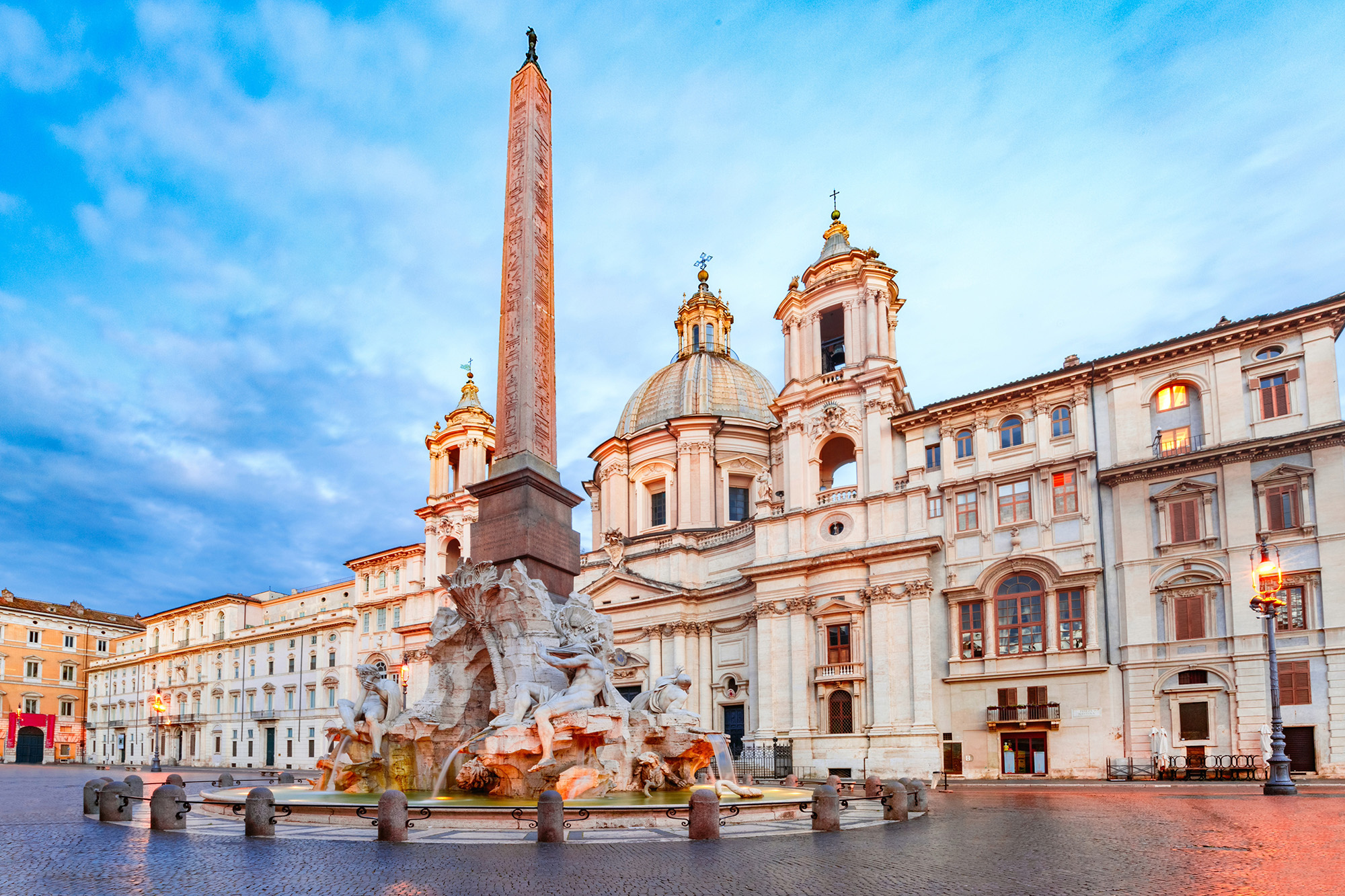Egypt in Rome: Obelisks, Lost Temples, and Mystery Cults
→Iseum, Campo Marzio Pantheon, Piazza Navona
- Days available: Tuesday and Thursday
- Start time: 5:00 PM
- Language: English
Included services:
- Authorized guide for 3 hours
- Headsets during the tour
- Entrance to Iseum
The tour begins at Piazza Venezia, the vibrant heart of modern Rome. Amid the grandeur of the Vittoriano monument and the bustling city life, beside the staircase of Palazzo Venezia stands Madama Lucrezia, one of Rome’s famous “talking statues.” Some believe she represents the ancient goddess Isis, a silent symbol of the deep connection between Rome and Egypt.
Not far away, in the Campo Marzio district, stood the Iseum Campense, the largest Roman sanctuary dedicated to Egyptian cults. Built during the late Republic and expanded under Caligula and Domitian, it covered a vast area adorned with sphinxes, statues, and authentic obelisks—some of which, like the obelisk in Piazza Navona, originated here. Remnants of the Iseum are still visible along Via di San Stefano del Cacco and in the recently reopened Iseum Museum, which is included in the visit.
Walking towards Piazza della Pigna, the name itself recalls the large bronze pine cone that probably decorated a sacred area connected to the Iseum and is now preserved in the Vatican Gardens. The pine cone’s symbolism—rebirth and immortality—was cherished in Egyptian spirituality as well. The journey continues to Piazza della Minerva, where ancient history meets Baroque art: a small Egyptian obelisk supported by an elephant sculpted by Bernini stands before the church of Santa Maria sopra Minerva. This obelisk, coming from the nearby Iseum, acts as a messenger of arcane knowledge, perfectly in tune with the esoteric cult of Isis.
A few steps away lies the Pantheon, where another obelisk, originally placed in the Temple of the Sun at Heliopolis, now towers over the square. Its alignment with the Pantheon’s dome reflects an ancient cosmic harmony between heaven and earth, myth and science. Near Piazza San Luigi dei Francesi, archaeological excavations uncovered fragments of a still-buried Egyptian obelisk, evidence of the deeply rooted Isis cult in ancient Campo Marzio. At Piazza di Sant’Eustachio, visitors encounter a Baroque fountain featuring a basin made from Egyptian granite, sourced from the Neronian-Alexandrian baths—a tangible imprint of Imperial Egypt in the heart of Rome.
The route concludes at Piazza Navona, where Bernini’s Fountain of the Four Rivers is crowned by an Egyptian pink granite obelisk from Aswan. Nearly 17 meters tall, it was brought to Rome by order of Domitian and decorated in situ with hieroglyphs celebrating the emperor among the gods. Originally located between the temples of Isis and Serapis, it now soars amid the Baroque wonders of the square, closing the itinerary with a perfect blend of the sacred, art, and power.

